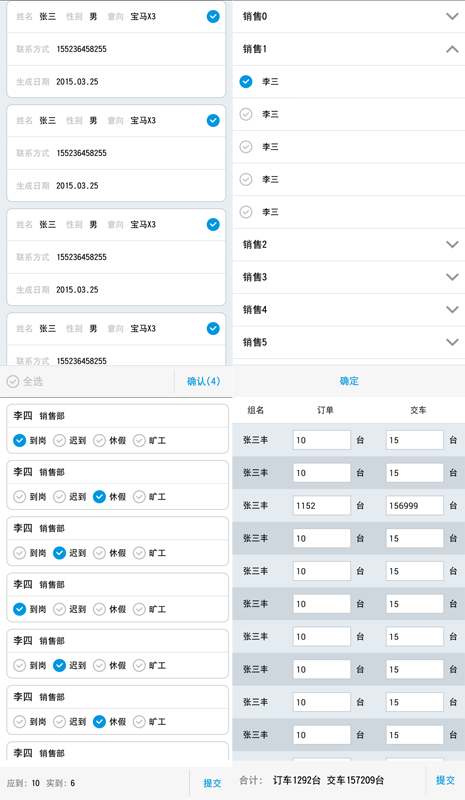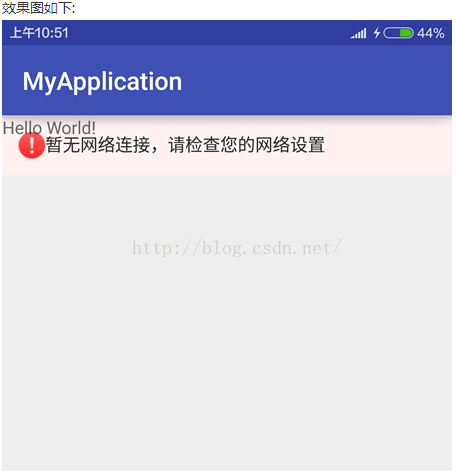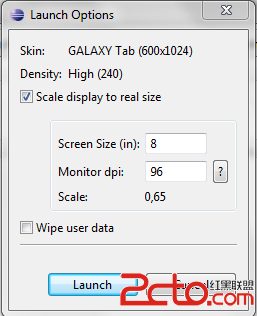編輯:關於Android編程
在上一篇博文中我們進行了有關Zygote進程的分析,我們知道Zygote進程創建了一個重要的進程–system_server進程後就進入了無限循環中,之後Android系統中的重要任務就交給了system_server進程,作為zygote的嫡長子進程,system_server進程的意義非凡,今天我們來分析一下system_server進程。
在ZygoteInit中main方法中,通過調用startSystemServer方法開啟了system_server進程。該方法主要為創建system_server進程准備了一些參數,並調用本地方法forkSystemServer創建system_server進程。讓我們來看一下startSystemServer方法的代碼:
private static boolean startSystemServer()
throws MethodAndArgsCaller, RuntimeException {
String args[] = {
"--setuid=1000",
"--setgid=1000",
"--setgroups=1001,1002,1003,1004,1005,1006,1007,1008,1009,1010,1018,1032,3001,3002,3003,3006,3007",
"--capabilities=130104352,130104352",
"--runtime-init",
"--nice-name=system_server",
"com.android.server.SystemServer",
};
ZygoteConnection.Arguments parsedArgs = null;
int pid;
try {
parsedArgs = new ZygoteConnection.Arguments(args);
ZygoteConnection.applyDebuggerSystemProperty(parsedArgs);
ZygoteConnection.applyInvokeWithSystemProperty(parsedArgs);
/* 創建system_server進程 */
pid = Zygote.forkSystemServer(
parsedArgs.uid, parsedArgs.gid,
parsedArgs.gids,
parsedArgs.debugFlags,
null,
parsedArgs.permittedCapabilities,
parsedArgs.effectiveCapabilities);
} catch (IllegalArgumentException ex) {
throw new RuntimeException(ex);
}
/* 子進程中執行 */
if (pid == 0) {
handleSystemServerProcess(parsedArgs);
}
return true;
}這裡的代碼並不復雜,可以看到,他調用了forkSystemServer方法來創建一個新的進程,之後在子進程,即system_server進程中執行handleSystemServerProcess方法。下面我們來看一下forkSystemServer方法,它是一個native方法對應的源文件在dalvik\vm\native\dalvik_system_Zygote.cpp中。代碼如下:
static void Dalvik_dalvik_system_Zygote_forkSystemServer(
const u4* args, JValue* pResult)
{
pid_t pid;
pid = forkAndSpecializeCommon(args, true);
/* zygote進程檢查其子進程是否死掉 */
if (pid > 0) {
int status;
ALOGI("System server process %d has been created", pid);
gDvm.systemServerPid = pid;
/* 如果system_server進程退出,則zygote進程也會被殺掉 */
if (waitpid(pid, &status, WNOHANG) == pid) {
ALOGE("System server process %d has died. Restarting Zygote!", pid);
kill(getpid(), SIGKILL);
}
}
RETURN_INT(pid);
}從代碼中可以看到在forkAndSpecializeCommon方法中,我們創建了子進程,並返回了子進程id,接下來我檢查如果system_server進程是否退出,若是的話則zygote進程也將會被被干掉,由此可見其重要性。接下來我們來看forkAndSpecializeCommon的代碼,這個system_server進程的創建真的是千峰百轉啊。。。
static pid_t forkAndSpecializeCommon(const u4* args, bool isSystemServer)
{
pid_t pid;
uid_t uid = (uid_t) args[0];
gid_t gid = (gid_t) args[1];
ArrayObject* gids = (ArrayObject *)args[2];
u4 debugFlags = args[3];
ArrayObject *rlimits = (ArrayObject *)args[4];
u4 mountMode = MOUNT_EXTERNAL_NONE;
int64_t permittedCapabilities, effectiveCapabilities;
char *seInfo = NULL;
char *niceName = NULL;
//傳入參數isSystemServer為true
if (isSystemServer) {
permittedCapabilities = args[5] | (int64_t) args[6] << 32;
effectiveCapabilities = args[7] | (int64_t) args[8] << 32;
} else {
......
}
if (!gDvm.zygote) {
dvmThrowIllegalStateException(
"VM instance not started with -Xzygote");
return -1;
}
// 在第一次調用fork函數之前需要調用
if (!dvmGcPreZygoteFork()) {
ALOGE("pre-fork heap failed");
dvmAbort();
}
setSignalHandler();
//向log文件中寫入一些數據
dvmDumpLoaderStats("zygote");
//子進程被fork出來
pid = fork();
if (pid == 0) {
//在這裡根據傳入的參數對子進程做出一些處理,例如設置進程名,設置各種id等
......
}
return pid;
}至此system_server進程終於被創建出來,我們可以看到system_server進程也是通過Linux系統特有的Fork機制分裂克隆出來的。在fork之前,我們還有一個重要方法沒有分析–setSignalHandler方法,該方法用來設置信號處理,下面讓我來看一下吧。
static void setSignalHandler()
{
int err;
struct sigaction sa;
memset(&sa, 0, sizeof(sa));
sa.sa_handler = sigchldHandler;
err = sigaction (SIGCHLD, &sa, NULL);//設置信號處理函數,該信號是子進程死亡的信號
if (err < 0) {
ALOGW("Error setting SIGCHLD handler: %s", strerror(errno));
}
}
static void sigchldHandler(int s)
{
pid_t pid;
int status;
while ((pid = waitpid(-1, &status, WNOHANG)) > 0) {
/* 打印出我們所關心的進程的死亡狀態. */
......
/*
* 如果剛剛銷毀的進程是system_server, 同時殺死zygote進程
* 這樣system_server進程和zygote進程將會被init進程重啟
*/
if (pid == gDvm.systemServerPid) {
ALOG(LOG_INFO, ZYGOTE_LOG_TAG,
"Exit zygote because system server (%d) has terminated",
(int) pid);
kill(getpid(), SIGKILL);
}
}
if (pid < 0) {
ALOG(LOG_WARN, ZYGOTE_LOG_TAG,
"Zygote SIGCHLD error in waitpid: %s",strerror(errno));
}
}這裡我們發現我們之前已經看到在forkSystemServer方法中已經檢查過system_server進程是否死亡,為什麼這裡還要再一次進行檢查?這是為了防止在我們還沒有得到fork子進程的pid時,system_server進程就已經死亡的情況。
總結一下:system_server進程的創建經歷了漫長的歷程:首先startSystemServer中調用了native方法forkSystemServer;之後在native方法forkSystemServer中調用了forkAndSpecializeCommon方法;在forkAndSpecializeCommon方法中fork之前還調用了setSignalHandler來設置信號處理項。這樣,我們的system_server進程終於被創建起來,同時他還和zygote進程保持著同生共死的關系。
在startSystemServer的方法中我們可以看到,在創建進程之後,在子進程即system_server進程中會執行handleSystemServerProcess方法,這便是system_server的職責所在,下面我們來看一下:
private static void handleSystemServerProcess(
ZygoteConnection.Arguments parsedArgs)
throws ZygoteInit.MethodAndArgsCaller {
closeServerSocket();
// 設置權限.
Libcore.os.umask(S_IRWXG | S_IRWXO);
......
if (parsedArgs.invokeWith != null) {
......
} else {
/* 剩余的參數傳遞到SystemServer. */
RuntimeInit.zygoteInit(parsedArgs.targetSdkVersion, parsedArgs.remainingArgs);
}
}可以看到最後system_server進程來到了RuntimeInit中,它的實現在frameworks\base\core\java\com\android\internal\os\RuntimeInit.java中
public static final void zygoteInit(int targetSdkVersion, String[] argv)
throws ZygoteInit.MethodAndArgsCaller {
if (DEBUG) Slog.d(TAG, "RuntimeInit: Starting application from zygote");
//關閉System.out和System.err,使用Android log
redirectLogStreams();
//做一些常規初始化
commonInit();
//native層初始化,調用此方法之後system_server將與Binder通信系統建立聯系,這樣就可以使用Binder了
nativeZygoteInit();
applicationInit(targetSdkVersion, argv);
}
private static void applicationInit(int targetSdkVersion, String[] argv)
throws ZygoteInit.MethodAndArgsCaller {
......
try {
args = new Arguments(argv);
} catch (IllegalArgumentException ex) {
Slog.e(TAG, ex.getMessage());
// let the process exit
return;
}
invokeStaticMain(args.startClass, args.startArgs);
}可以看到,最終我們調用了invokeStaticMain方法,該方法的傳入參數在startSystemServer方法中被設置,其傳入參數的類名是”com.android.server.SystemServer”
private static void invokeStaticMain(String className, String[] argv)
throws ZygoteInit.MethodAndArgsCaller {
Class cl;
try {
cl = Class.forName(className);
} catch (ClassNotFoundException ex) {
throw new RuntimeException(
"Missing class when invoking static main " + className,
ex);
}
Method m;
try {
m = cl.getMethod("main", new Class[] { String[].class });
} catch (NoSuchMethodException ex) {
throw new RuntimeException(
"Missing static main on " + className, ex);
} catch (SecurityException ex) {
throw new RuntimeException(
"Problem getting static main on " + className, ex);
}
int modifiers = m.getModifiers();
if (! (Modifier.isStatic(modifiers) && Modifier.isPublic(modifiers))) {
throw new RuntimeException(
"Main method is not public and static on " + className);
}
/* 拋出的異常在ZygoteInit.main()中被截獲 */
throw new ZygoteInit.MethodAndArgsCaller(m, argv);
}讓我們來看看被截獲的語句:
catch (MethodAndArgsCaller caller) {
caller.run();//調用了caller的run方法
} run方法代碼:
public void run() {
try {
mMethod.invoke(null, new Object[] { mArgs });
} catch (IllegalAccessException ex) {
throw new RuntimeException(ex);
} catch (InvocationTargetException ex) {
Throwable cause = ex.getCause();
if (cause instanceof RuntimeException) {
throw (RuntimeException) cause;
} else if (cause instanceof Error) {
throw (Error) cause;
}
throw new RuntimeException(ex);
}
}可以看到,在函數最後拋出異常,在ZygoteInit.main()中被截獲,由於傳遞的參數類名是”com.android.server.SystemServer”,這樣我們調用了MethodAndArgsCaller.run()方法去執行了SystemServer類的靜態main方法。(關於ZygoteInit可以參考上一篇博文:Android源碼分析–Zygote進程分析)
public static void main(String[] args) {
......
// Mmmmmm... more memory!
dalvik.system.VMRuntime.getRuntime().clearGrowthLimit();
// system server一直在運行, 所以他需要盡可能有效的利用內存
VMRuntime.getRuntime().setTargetHeapUtilization(0.8f);
Environment.setUserRequired(true);
System.loadLibrary("android_servers");
Slog.i(TAG, "Entered the Android system server!");
// native方法,進行一些傳感器服務的初始化
nativeInit();
// 創建一個單獨的線程,在這裡啟動系統的各項服務
ServerThread thr = new ServerThread();
thr.initAndLoop();
}最終,system_server開啟了一個新的線程,並執行了它的initAndLoop方法,其也被定義在SystemServer.java中,該方法的代碼較多,其主要的工作就是開啟了系統中的各項服務,如電池服務,藍牙服務等等。並調用了Looper的prepareMainLooper方法進行消息循環,然後處理消息,這裡不再贅述。
最後,我們來總結一下:
首先system_server執行handleSystemServerProcess方法來完成自己的使命; 之後調用RuntimeInit.zygoteInit方法,在這裡我們進行了一些常規的初始化工作已經native層的初始化,從而與Binder通信建立聯系; 之後調用invokeStaticMain方法,利用拋出異常的方法在ZygoteInit的main方法中截獲並去執行SystemServer的main方法; 在SystemServer的main方法中,我調用nativeInit方法去初始化一些傳感器服務,並開啟了單獨的線程去開啟Android系統中的各項服務,並調用了Looper的prepareMainLooper方法進行消息循環,然後處理消息 android listview ExpandableListView實現多選,單選,全選,edittext實現批量輸入
android listview ExpandableListView實現多選,單選,全選,edittext實現批量輸入
最近在項目開發中,由於項目的需求要實現一些列表的單選,多選,全選,批量輸入之類的功能,其實功能的實現倒不是很復雜,需求中也沒有涉及到復雜的動畫什麼之類,主要是解決列表數據
 Android使用Fragment實現底部導航欄分析
Android使用Fragment實現底部導航欄分析
前言 在做移動開發過程中底部導航欄是十分常見的功能,且市面上見到的做法也有很多種,這篇博文記錄一下使用Fragment實現底部導航欄的功能,算是對這幾天學習Andr
 Android 網絡連接判斷並進行相關處理
Android 網絡連接判斷並進行相關處理
獲取網絡信息需要在AndroidManifest.xml文件中加入相應的權限。 1)判斷是否有網絡連接,沒有則進入網絡設置/***檢測網絡是否連接*@retur
 Android (supports-sceeens)的用法,適應屏幕大小
Android (supports-sceeens)的用法,適應屏幕大小
我們都知道,Android 2.3(姜餅) SDK發布的時候,在SDK中增加了第三方add-ons,其中就包括了針對平板電腦的Galaxy Tab Addon。 當我